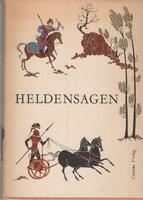Kalevala
The Kalevala (Finnish: Kalevala, IPA: [ˈkɑleʋɑlɑ]) is a 19th-century work of epic poetry compiled by Elias Lönnrot from Karelian and Finnish oral folklore and mythology, telling an epic story about the Creation of the Earth, describing the controversies and retaliatory voyages between the peoples of the land of Kalevala called Väinölä and the land of Pohjola and their various protagonists and antagonists, as well as the construction and robbery of the epic mythical wealth-making machine Sampo.The Kalevala is regarded as the national epic of Karelia and Finland and is one of the most significant works of Finnish literature with J. L. Runeberg's The Tales of Ensign Stål and Aleksis Kivi's The Seven Brothers. The Kalevala was instrumental in the development of the Finnish national identity and the intensification of Finland's language strife that ultimately led to Finland's independence from Russia in 1917. The work is also well known internationally and has partly influenced, for example, J. R. R. Tolkien's legendarium (i.e. Middle-earth mythology).The first version of the Kalevala, called the Old Kalevala, was published in 1835, consisting of 12,078 verses. The version most commonly known today was first published in 1849 and consists of 22,795 verses, divided into fifty folk stories (Finnish: runot). An abridged version, containing all fifty poems but just 9732 verses, was published in 1862. In connection with the Kalevala, there is another much more lyrical collection of poems, also compiled by Lönnrot, called Kanteletar from 1840, which is mostly seen as a "sister collection" of the Kalevala. Source: Wikipedia (en)
Editions
5- date of publication: 1999ISBN-13: 978-0-19-283570-3
In your inventory
In your friends' and groups' inventories
Nearby
Elsewhere
Works based on Kalevala 6
Work - wd:Q130924





